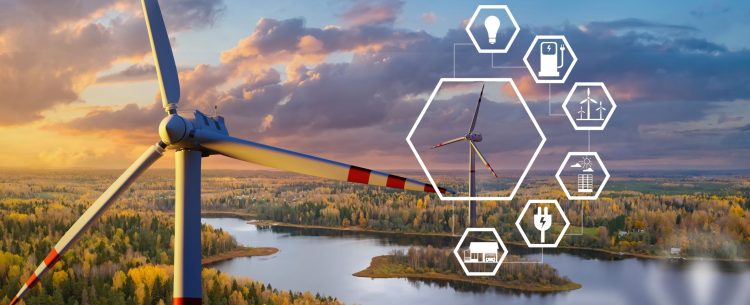Introduction
The global energy landscape is rapidly evolving, with a shift toward renewable energy sources and changing geopolitical dynamics. Europe, historically dependent on external energy suppliers, faces significant challenges in securing stable and sustainable energy supplies. The recent energy crisis, exacerbated by geopolitical tensions and the ongoing transition to greener energy, has highlighted the need for diversification and resilience. In this context, the United States is stepping in as a key energy partner, offering both traditional and renewable energy solutions to support Europe’s energy security. This article explores Europe’s energy challenges, the role of the U.S. in addressing these issues, and the broader implications of renewable energy transitions on cross-continental relations. Additionally, we will examine investment opportunities in this evolving energy landscape.
1. Europe’s Energy Crisis and Its Reliance on External Suppliers
Europe’s energy crisis has been a wake-up call, underscoring the vulnerabilities of relying on external energy suppliers, particularly in the context of political instability and supply disruptions. The reliance on Russia for natural gas, oil, and coal has long been a point of contention for the European Union (EU). While Russia has been a dominant supplier, the geopolitical tensions, particularly the conflict in Ukraine, have disrupted supply chains and led to energy shortages.
- Dependency on Russia: Russia’s role as Europe’s largest natural gas supplier has meant that many EU countries depended heavily on Russian energy exports. This dependency created not only an energy security risk but also economic challenges, as fluctuations in supply and pricing would directly affect energy costs and industrial activity across Europe.
- Diversification Efforts: In response to the crisis, the EU has accelerated its efforts to diversify its energy sources. European countries have sought to increase imports of liquefied natural gas (LNG) from other countries like the U.S., Qatar, and Nigeria. Additionally, Europe is investing in energy infrastructure projects such as pipelines and LNG terminals to reduce dependency on any single supplier.
- The Growing Energy Crisis: Rising energy prices, particularly during the winter months, have strained both households and businesses. The energy crisis has also highlighted the need for a more sustainable, long-term solution that reduces dependence on fossil fuels and embraces renewable energy sources.
2. How the U.S. Is Stepping In as an Energy Partner
The United States has emerged as a critical energy partner for Europe, providing both traditional and renewable energy solutions to address Europe’s energy security needs. The shift toward American energy exports is an essential part of Europe’s strategy to reduce its reliance on Russia and diversify its sources of energy.
- Liquefied Natural Gas (LNG) Exports: One of the most significant contributions the U.S. has made to Europe’s energy security is its LNG exports. Over the past few years, the U.S. has ramped up LNG production and exports, becoming one of the world’s top LNG exporters. Europe has increasingly turned to American LNG as a reliable alternative to Russian natural gas. The U.S. has been able to provide Europe with a steady supply of LNG, helping to stabilize prices and ensure that there is sufficient energy during periods of high demand.
- Energy Infrastructure Investment: The U.S. has also invested in European energy infrastructure to facilitate the transportation and distribution of LNG. American companies have been involved in constructing LNG terminals, regasification plants, and storage facilities throughout Europe, helping to ensure that LNG from the U.S. can reach European markets efficiently.
- Renewable Energy Partnerships: As the world transitions to a low-carbon future, the U.S. is also playing a role in helping Europe diversify into renewable energy. American companies, particularly in the solar, wind, and battery storage sectors, are partnering with European counterparts to expand renewable energy projects across the continent. These collaborations will be crucial for Europe’s efforts to meet its climate goals and reduce its carbon emissions.

3. The Impact of Renewable Energy Transitions on Cross-Continental Relations
The global transition to renewable energy is reshaping the dynamics of international energy relations. As Europe seeks to decarbonize its economy, its relationship with traditional energy suppliers is changing, and the role of the U.S. as an energy partner is becoming more prominent.
- Reducing Fossil Fuel Dependence: Europe’s shift toward renewable energy is driven by the EU’s commitment to the Green Deal and its goal of achieving carbon neutrality by 2050. This transition will reduce Europe’s reliance on fossil fuels, including oil, coal, and natural gas, and will require significant investments in renewable energy infrastructure. As a result, Europe will increasingly look to U.S. expertise in renewable energy technologies to meet its energy needs.
- Renewable Energy Trade: Cross-continental relations in the energy sector will also be influenced by the growing trade in renewable energy technologies. The U.S. has long been a leader in solar, wind, and battery storage technologies, and European countries are increasingly turning to American innovation to drive their own energy transitions. The collaboration between the U.S. and Europe in the renewable energy space could further strengthen the economic ties between the two regions.
- Geopolitical Implications: The energy transition could also have geopolitical implications. As Europe moves away from traditional energy sources and toward renewables, it may reduce its geopolitical reliance on countries like Russia and the Middle East. The U.S., as a major producer of renewable energy technologies, could benefit from this shift by becoming Europe’s primary partner in this new energy era.
4. Investment Opportunities in the Evolving Energy Landscape
The evolving energy landscape presents a wide array of investment opportunities, particularly in renewable energy and energy infrastructure. As Europe and the U.S. work together to address energy security challenges, investors have the chance to capitalize on emerging trends and technologies.
- Renewable Energy Stocks: Companies involved in the production of solar panels, wind turbines, and battery storage solutions are poised for significant growth as the world moves toward decarbonization. Investors may look to stocks of companies like Tesla, First Solar, and NextEra Energy, which are leading the way in clean energy innovation. Additionally, European firms like Ørsted and Siemens Gamesa are at the forefront of wind energy development.
- Energy Infrastructure: Investments in energy infrastructure, such as LNG terminals, pipelines, and renewable energy plants, provide opportunities for long-term gains. Public-private partnerships and government incentives are driving growth in energy infrastructure development, creating investment opportunities for infrastructure funds and real estate investment trusts (REITs) focused on energy assets.
- Green Bonds and ESG Investments: The rise of environmental, social, and governance (ESG) investing has brought renewed attention to sustainable investment options. Green bonds, which are used to fund environmentally friendly projects, and ESG-focused funds are increasingly popular among investors looking to align their portfolios with sustainability goals. With Europe’s strong commitment to renewable energy, green bonds issued by European governments or companies may offer attractive investment opportunities.
- Energy ETFs and Funds: Exchange-traded funds (ETFs) and mutual funds focused on the energy sector, particularly those targeting clean energy, offer a diversified way to invest in the transition to a low-carbon economy. Investors can choose from a range of ETFs focused on solar, wind, and energy efficiency, as well as those targeting energy infrastructure and the growing market for electric vehicles.
Conclusion
Europe’s energy crisis has underscored the need for diversification, security, and sustainability in energy supplies. As Europe turns to the U.S. for both traditional and renewable energy solutions, cross-continental energy relations are being redefined. The global transition to renewable energy presents not only challenges but also tremendous investment opportunities, particularly in the sectors of renewable energy, energy infrastructure, and green finance. By strategically aligning portfolios with these emerging trends, investors can participate in the transformation of the global energy landscape and help shape the future of energy security.































